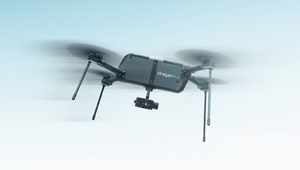Opinion: The Internet Of Outcomes For AviationOpinion: The Internet Of Outcomes For Aviation
Realizing the benefits of aircraft connectivity is not a done deal.
June 30, 2016

By Michael William Denis
What’s the matter with Owen? You know Owen. He is the central character in General Electric’s advertising campaign—a millennial who just graduated from college, got a programming job at GE but can’t quite explain to his friends or parents what he and his company actually do.
“GE Aviation estimates an easily achievable 1% performance improvement from industrial IoT [Internet of Things], and predictive analytics could result in $22 billion in annual benefits across the civil aviation industry.”
That was a “wow” moment for participants at a presentation by GE Aviation during the 2015 Paris Air Show.
The only problem was, no one on the WebEx could explain how that number was going to be realized. Maybe that is what’s the matter with Owen.
The Internet of Things, Digital Thread, Industrial Internet, Cognitive Computing, Machine Learning and Autonomics are some of the terms used for the hottest topic in business today.
Given this issue’s cover story, I assume we can forgo the history lesson of Kevin Ashton of P&G working at the MIT Auto-ID lab attempting to figure out how to keep lipstick stocked at Macy’s, Vice Adm. Arthur Cebrowski developing Sense and Respond Logistics, or even Cisco’s fundamental IoT triad being machine-to-machine/machine-to-human/human-to-human connectivity and decision support.
Will Greene at American Airlines always used to ask when someone pitched him an idea, “How do I cash that check?”
The question is: What are the use cases and value of the IoT for companies in aviation, aerospace, defense, leasing and insurance across the operational service life cycle of revenue-generating assets—and how does Owen cash that check?
The Internet of Things isn’t about the “internet” or about “things”—IoT is about outcomes.
One Boeing 787 generates a half-terabyte of data per transatlantic flight. Start doing the math—airlines generate yottabytes (yotta, not Yoda) in sensor, flight, environmental and maintenance data, all of which fall under the descriptor of operational data (OD). Some call this “big data,” although by definition it is actually not, but it is a lotta data.
Last fall, one of the visionaries of our industry, Ray Valeika, wrote an opinion piece for Aviation Week & Space Technology entitled, “Big Data From Aircraft? Great. But For What?” While the title sounds luddite-ish, it is hardly that. Ray’s point is not about the technology. It’s about the value processed data can deliver to enable better decision-making that results in better outcomes: decreasing costs, increasing profits, improved passenger experience and new revenue streams—for airlines.
These use cases for IoT are well- documented in the areas of flight, airport and maintenance operations and are being expanded to the passenger experience, leasing and insurance.
And, no, Owen did not help develop any of these. He works for an OEM, not an operator.
Operations data is like crude oil, valuable only when processed. There is a battle a brewing over OD. But unlike the Instructions for Continued Airworthiness debate and lawsuits, there is no debate on who owns OD: Operators do.
Historically, operators freely gave away their very valuable OD because they did not have ways to process it. But now, IoT changes that. This begs the question: Who is going to deliver the analytical capabilities to realize the benefits from airlines’ OD?
With a few exceptions, OEMs have dominated this category of capabilities in the form of remote engine-condition monitoring and aircraft health-management tools. But none of the current-generation OEM tools integrate into an airline’s flight or maintenance operations. Even a single fleet operator will have up to three OEM tools and multifleet operators have many more.
Finally, the current generation of OEM tools are more along the lines of reactionary defect management versus machine-learning predictive and prognostic health management. Just as it is better to manage one’s health rather than wait for an illness, it also is better to keep revenue-generating assets generating revenue.
Airlines have a long history of solving their own challenges. All of the computer reservation systems/global distribution systems were started at one airline or another, most of the MRO IT systems originated at an airline, and at one time ARINC, SITA and AeroXchange were airline-owned (AX still is).
So airlines and MRO providers are at a crossroads. They have a choice: collaboratively develop open systems enabling machine-learning prediction, diagnosis, prescription, prognosis, health management, fleet/mission optimization and autonomics, or wait to pay Owen (and his colleagues) to deliver something.
Maybe the answer to “what’s the matter with Owen?” is really about how much of that $22 billion check he wants to keep for himself.
This article originally appeared on our sister publication InsideMRO.
You May Also Like
.jpg?width=700&auto=webp&quality=80&disable=upscale)
.jpg?width=700&auto=webp&quality=80&disable=upscale)

.jpg?width=300&auto=webp&quality=80&disable=upscale)


